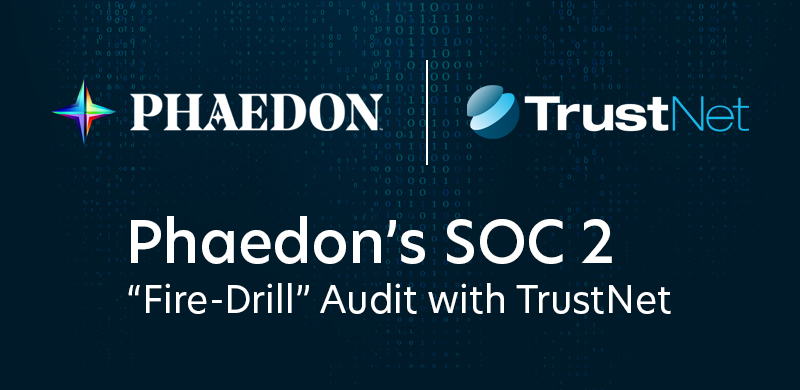Blog Using Cyber Risk Ratings to Track and Measure Your Security Investments
Using Cyber Risk Ratings to Track and Measure Your Security Investments

Every organization that wants to thrive needs to invest in security. You need to protect your assets and customers, meet regulatory standards, and deal with cyber threats. But merely procuring and deploying various security solutions won’t take you very far. It is equally important to verify whether your security investments are worth the precious dollars they cost. Otherwise, they can needlessly drain your resources and do the opposite of what they’re expected to do: compromise security.
Cybersecurity risk ratings are among the most useful methods for tracking and measuring the effectiveness of your security investments. These ratings use different metrics to quantify risk exposure and assign an easily understandable “score” to the subject entity. The higher the risk, the lower the score.
Using cybersecurity risk ratings, you can make smart and cost-efficient decisions about the technologies, services, and products your organization allocates for security. By continuously driving corrective measures, risk ratings help reduce waste and improve security performance over time.
Understanding Cyber Risk and Security Investments
Cyber risk refers to potential damage an organization might incur due to vulnerabilities in its digital infrastructure. This damage may include business disruption, financial loss, reputational harm, and regulatory penalties.
Investing in cybersecurity solutions such as firewalls, intrusion detection systems, anti-malware protection, and managed compliance services help prevent or mitigate such damages. But because these resources rarely come cheap, having a way to dynamically detect their vulnerabilities and validate their effectiveness enables your company to take appropriate action when a security solution is not performing as expected or when the risk it poses becomes problematic.
Cybersecurity risk ratings provide a standardized and objective metric that can be used to benchmark, compare, and monitor the cyber risk exposure of different entities. They enable organizations to identify the areas where they need to improve their security controls and prioritize remediation efforts.
Cyber risk ratings also address the inadequacy of traditional approaches to security investments. Largely reactive, these approaches tend to resolve issues only as they arise instead of anticipating them and preempting their transition into bigger challenges. Because cyber risk ratings implement continuous monitoring and assessment, they function as a proactive tool that helps prevent serious incidents and keep a company’s security infrastructure a step ahead of evolving threats.
Optimizing Security Investments with Cyber Risk Scores
When assessing the security risk of entities, a cyber risk rating system uses a matrix of factors or key performance indicators (KPIs) to generate a score. Factors include the type and number of assets, the effectiveness of security controls and policies in place, regulatory compliance, and frequency and severity of incidents. Typically, higher scores mean lower risk.
Cybersecurity risk ratings enable organizations to gain a better understanding of their own security posture and compare it with their peers and competitors. This can help them identify their strengths and weaknesses, prioritize their security investments, and improve their security practices. By understanding the impact of each security investment, organizations can optimize and allocate resources to mitigate the most serious risks. By benchmarking their ratings with those of peers and competitors, companies can make data-driven decisions about security controls, technology procurements, and other measures they need to invest in.
Additionally, cybersecurity risk ratings can help companies to continuously monitor their information systems and detect suspicious activities or anomalies. This enables quick and effective response to emerging cyber threats and vulnerabilities, mitigating the impact of potential breaches.
Key Components of Cybersecurity Risk Ratings
Cyber risk ratings are based on various data sources, such as threat intelligence, external scans, open-source information, hacker threat analysis, compliance surveys, and third-party assessments.
Some of the key elements of cyber risk ratings include:
- Methodology: This is the set of criteria, metrics, and algorithms used to calculate the cyber risk score of an organization. It should be transparent, consistent, and objective. Risk rating methodology may also include common security processes such as asset identification, continuous monitoring, threat analysis, vulnerability assessment, risk mitigation, and reporting.
- Scope: This is the range of domains, assets, and activities that are covered by the cyber risk rating. It should be comprehensive, relevant, and accurate.
- Frequency: This is how often the cyber risk rating score is updated and communicated. It should be timely, responsive, and actionable. Many rating systems calculate the score daily, but the frequency can be modified.
Benefits of Cyber Risk Ratings in Managing Your Security Investments
Cybersecurity risk ratings can be a valuable tool for optimizing your security investments. Some of its advantages include:
- Real-time Risk Awareness: Through continuous monitoring and by using data-driven metrics, companies gain a clearer picture of their cyber risk exposure and how it changes over time. This enables organizations to make better decisions, prioritize risks, and allocate resources more efficiently.
- Optimized Security Stack: By uncovering gaps and vulnerabilities in specific components of an information system, companies can identify which of their security measures work as expected, which need remediation, and which need to be replaced or upgraded. This enables organizations to fine-tune, streamline, and optimize their security infrastructure.
- Enhanced Compliance: Cybersecurity risk ratings help uncover and remediate compliance gaps. This allows companies to take proactive measures to meet regulatory standards and build trust with customers and other stakeholders.
- Peer Comparison: Risk rating scores make it convenient to benchmark and compare a company’s cybersecurity performance with those of its peers. This helps organizations recognize their strengths and weaknesses, facilitating well-grounded investments in technologies and other resources that can improve security. A side-by-side comparison of risk rating scores also makes it easier to choose between vendors offering the same products or services.
Challenges and Considerations
While it provides compelling benefits, a cybersecurity risk rating service can pose adoption challenges:
- Cost. Because it performs many useful functions, a cyber risk rating service can come at a steep price, especially for small and medium-sized businesses. However, cost should always be weighed against benefits and the potential impact of unaddressed security incidents. Moreover, there are cyber risk rating providers like TrustNet that offer world-class services at affordable price points.
- Compliance. A cyber risk rating service requires massive volumes of high-quality data to make accurate score calculations. Some of that data may be sensitive information covered by data privacy and protection laws. Partnering with duly accredited providers who can navigate the complex regulatory landscape can resolve this concern.
- Culture. Implementing cyber risk rating as part of your security program may experience some resistance from personnel who have become well-entrenched in legacy practices. Clearly articulating the purpose and benefits of cyber risk ratings can help drive buy-in.
What is the ideal cyber risk rating service?
Not all cyber risk ratings systems are equal. Data quality, transparency of score calculation, and pricing vary across different providers. Still, there are cyber risk rating services you can always depend on.
Designed by experts with decades of industry experience, the iTrust Cyber Risk Ratings Platform enables a 360° visibility into your cybersecurity and compliance risks. Engineered for enterprises but priced for startups, the iTrust platform incorporates many useful functions such as continuous monitoring and assessment, automated compliance tracking, hacker threat analysis, and breach monitoring.
Conclusion
Cyber risk ratings perform many vital tasks. They provide real-time visibility into the current state of your compliance and security. They show which vendors are worth partnering with. They can tell which security investments were bad decisions. And they can analyze large volumes of threat data to keep you ahead of cybercrime and on the good side of your customers.
Schedule a free iTrust Cyber Risk Ratings demo.




